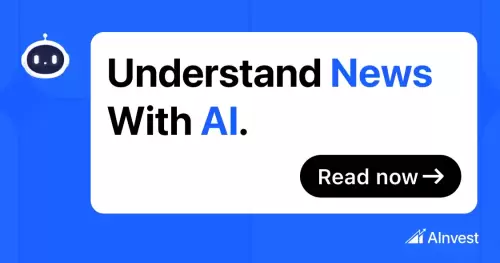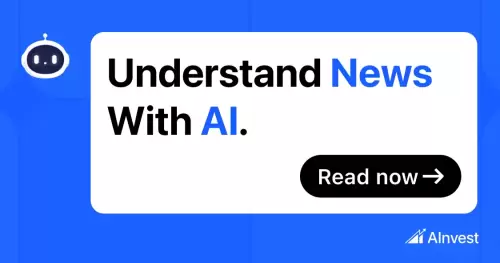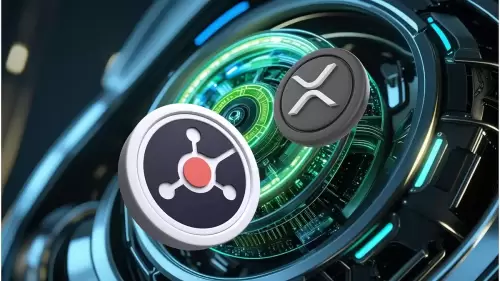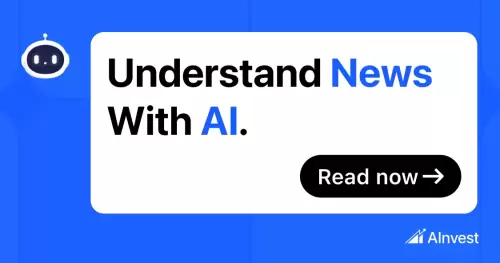 |
|
 |
|
 |
|
 |
|
 |
|
 |
|
 |
|
 |
|
 |
|
 |
|
 |
|
 |
|
 |
|
 |
|
 |
|
自GPU和地下室設置時代以來,比特幣採礦已經走了很長一段路。在那個時候,礦工以無數的方式進步。
Bitcoin mining has come a long way since the days of GPUs and basement set ups. In that time, miners have advanced in countless ways. For example, ASICs are now the standard, not GPUs.
自GPU和地下室設置時代以來,比特幣採礦已經走了很長一段路。在那個時候,礦工以無數的方式進步。例如,ASIC現在是標準的,而不是GPU。
Furthermore, enterprise grade players have entered the field, opening new frontiers and bringing with them the size and institutional recognition that opens the doors to otherwise unreachable places for smaller miners. Nowadays, the mining landscape is one where grid services, curtailment strategies, and energy market participation are no longer edge cases but core strategies.
此外,企業級參與者已經進入了該領域,開放了新的邊境,並帶來了規模和機構認可,這為小型礦工打開了其他無法達到的地方。如今,採礦景觀是網格服務,削減策略和能源市場參與不再是邊緣案例,而是核心策略。
As the world around it has moved forward, there’s one question we keep hearing from miners: can PPLNS adapt?
隨著周圍世界的發展,我們一直在聽礦工的一個問題:PPLN可以適應嗎?
Many miners, particularly those working closely with energy providers or integrating Demand Response mechanisms, have come to view PPLNS with suspicion. They worry that it penalizes downtime and rewards only uninterrupted hashrate—a bad deal for those who routinely curtail machines to support the grid or provide other services.
許多礦工,特別是那些與能源提供者緊密合作或整合需求響應機制的礦工,他們已經懷疑了PPLN。他們擔心它會懲罰停機時間,並僅獎勵不間斷的哈希拉特(Hashrate) - 對於那些經常削減機器以支持網格或提供其他服務的人來說,這是一筆不好的交易。
This fear isn’t baseless. It traces back to a pivotal moment in the mining industry’s recent past, one that apparently sealed the deal for many on PPLNS style payouts: the fallout between RIOT and Braiins Pool.
這種恐懼並非毫無根據。它可以追溯到採礦業最近的一個關鍵時刻,這顯然使許多人在PPLNS風格的支出上達成了交易:Riot和Braiins Pool之間的後果。
At the time, Braiins was using the Score payout system. Designed in 2011 by Slush himself, Score was engineered to solve the problem of pool hopping—when miners would jump between pools to exploit reward systems. There’s also been a misconception that Score is a PPLNS style payment system, but as Rosenfeld’s bible on pool payout systems describes, Score and PPLNS are distinctly different payout methods. The main difference is how they account for shares, specifically, Score implemented a rolling window with exponential decay function, this effectively made the lookback window very short. On the other hand, PPLNS is a family of payout systems with various types of fixed length lookback windows.
當時,布賴恩斯正在使用得分支付系統。 Score在2011年由Slush本人設計的,是為了解決跳台跳躍問題而設計的,當時礦工會在泳池之間跳躍以利用獎勵系統。也有人誤解得分是PPLNS樣式支付系統,但是正如羅森菲爾德(Rosenfeld)在泳池支付系統上的聖經所描述的那樣,得分和PPLN是明顯不同的支付方法。主要區別是他們如何解釋共享,具體來說,得分實現了具有指數衰減功能的滾動窗口,這有效地使回顧窗口非常短。另一方面,PPLN是一個帶有各種固定長度回溯窗口的支付系統系列。
As shown on this archived website of how Score worked, you can see that after 90 minutes your hashrate had no more presence on the pool. This means that the moment a miner starts mining, their share of rewards quickly reaches the fair value of the hashrate. On the other hand, when a miner stops mining, it drops equally fast, as shown on the gif below.
如該存檔的網站上所示,得分如何工作,您可以看到90分鐘後,您的哈希拉特在泳池上不再存在。這意味著,當礦工開始開採時,他們的獎勵份額很快就達到了哈希拉特的公允價值。另一方面,當礦工停止採礦時,它會同樣快地下降,如下面的GIF所示。
This might have worked well in the era of cowboys and hackers, but it was never designed with today’s complex mining environments in mind. Certainly not with Demand Response, where miners intentionally and profitably take machines offline to stabilize energy grids or bid into ancillary markets. To Score, that kind of behavior looks no different than a pool hopper—someone attempting to cheat the system.
在牛仔和黑客時代,這可能效果很好,但是從來沒有考慮到當今復雜的採礦環境。當然,沒有需求反應,礦工有意和有利可圖地將機器脫機以穩定能源電網或競標輔助市場。要得分,這種行為看起來與泳池料斗沒有什麼不同 - 有人試圖欺騙系統。
So when RIOT left Braiins, citing concerns about payout mechanics, it sent a shockwave through the mining world. Due to the aforementioned misconception, Score system’s flaws got unfairly projected onto a broader category of payouts, PPLNS got caught in the fray, catching a stray bullet in the process, and the industry collectively threw the baby out with the bathwater.
因此,當Riot離開Braiins時,引用了對支付機制的擔憂,它在採礦界引起了衝擊波。由於上述誤解,得分系統的缺陷被不公平地投射到更廣泛的支出上,PPLN被陷入了競爭中,在此過程中抓住了流浪子彈,該行業將嬰兒與沐浴水一起扔掉。
But the mining world has changed, and it’s time for the phoenix to rise from his ashes.
但是採礦界發生了變化,現在是時候讓鳳凰從他的骨灰中崛起了。
SLICE: A Payout Mechanism for the 21st Century Grid
切片:21世紀網格的支付機制
Enter SLICE, a modern, open-source Stratum-V2-ready payout system created by the DMND team. It’s an improvement and evolution of PPLNS, that rethinks how miners get paid, rewards are calculated, and —most importantly— how downtime is treated respect to Score. All while preserving miner’s right to build their own block templates with SV2.
輸入SLICE,這是由DMND團隊創建的現代,開源層V2就緒的支付系統。這是PPLN的改進和演變,它重新考慮了礦工如何獲得報酬,計算獎勵,並且 - 最重要的是,如何尊重停機時間對得分的尊重。在保留礦工使用SV2構建自己的塊模板的權利的同時。
At its core, SLICE is about fairness and transparency. It preserves the foundational idea of PPLNS—paying miners in proportion to their actual contribution to solving blocks—while modernizing it for today’s decentralized mining landscape.
切片的核心是關於公平和透明度的。它保留了PPLN的基本思想,即礦工與他們對解決方案的實際貢獻成比例,同時將其現代化為當今分散的採礦景觀。
The key innovation lies in how SLICE structures reward calculation, and on how the lookback window works. Rather than treating the entire pool as a monolith, SLICE breaks time into smaller, dynamic “slices” of work to properly distribute the fee component. These slices represent batches of shares submitted over a specific period, where we control for the amount of fees in the mempool, and compare and score different job templates for the financial value they represent. When a block is found, SLICE distributes the block subsidy and transaction fees separately. The subsidy is allocated proportionally by hashrate, while the fees are distributed based on hashrate and financial value.
關鍵創新在於切片結構如何獎勵計算以及回顧窗口的工作方式。切片不將整個池視為整體池,而是將時間分為較小的動態“切片”,以正確分發費用組成部分。這些切片代表了在特定時期內提交的股票,我們控制了Mempool中的費用,並比較和評分不同的工作模板以其代表的財務價值。當找到一個塊時,切片分別分別分配塊補貼和交易費用。該補貼是由哈希拉特(Hashrate)按比例分配的,而費用是根據哈希(Hashrate)和財務價值分配的。
This is particularly relevant in a world where miners can choose their own transaction sets. Some miners may prioritize high-fee MEV-style bundles; others may exclude certain types of transactions for ideological, political or technical reasons. SLICE ensures that, within each slice, miners are rewarded according to both the quantity and quality of their work—without punishing them for downtime or strategic energy decisions. For those curious to learn more, this article can prove helpful.
這在礦工可以選擇自己的交易集的世界中尤其重要。一些礦工可以優先考慮高費型MEV風格的捆綁包。其他人則出於意識形態,政治或技術原因可能排除某些類型的交易。切片確保在每個切片中,根據其工作的數量和質量都將獎勵礦工,而無需懲罰他們以停機或戰略能源決策。對於那些想知道更多信息的人,本文可能會有所幫助。
Demand Response Without Penalty
要求無罰款的響應
What makes SLICE
是什麼使切片
免責聲明:info@kdj.com
所提供的資訊並非交易建議。 kDJ.com對任何基於本文提供的資訊進行的投資不承擔任何責任。加密貨幣波動性較大,建議您充分研究後謹慎投資!
如果您認為本網站使用的內容侵犯了您的版權,請立即聯絡我們(info@kdj.com),我們將及時刪除。
-

-

- 比特幣,微觀和機構信心:看漲的三桿?
- 2025-08-03 03:41:01
- MicroStrategy的持續比特幣積累信號信號是強大的機構信心,可能會重塑加密市場。這是持續牛的開始嗎?
-

- Ruvi AI令牌:預售里程碑後即將上漲?
- 2025-08-03 03:31:02
- Ruvi AI的預售成功,CMC上市和即將到來的價格上漲正在轉向。這是加密貨幣中的AI驅動令牌嗎?
-

- Ruvi AI:百萬富翁製造商的價格飆升了嗎?
- 2025-08-03 02:00:59
- Ruvi AI將引起嗡嗡聲,成為下一個潛在的“百萬富翁代幣”。發現其AI驅動的超級應用程序和戰略預售如何導致巨大的收益。
-

- DOGE,公用事業硬幣和聰明的錢:加密投資的新時代?
- 2025-08-03 02:00:23
- Doge的模因魔術褪色嗎?聰明的錢正在註視公用事力硬幣。發現為什麼專家在不斷發展的加密景觀中從炒作轉移到實質。
-

-

-

- Solana,Wewake和Presales:加密貨幣空間中有什麼熱?
- 2025-08-03 01:46:34
- 深入了解Wewake的創新預售以及整體趨勢圍繞著加密貨幣投資的未來的嗡嗡聲。
-



























































